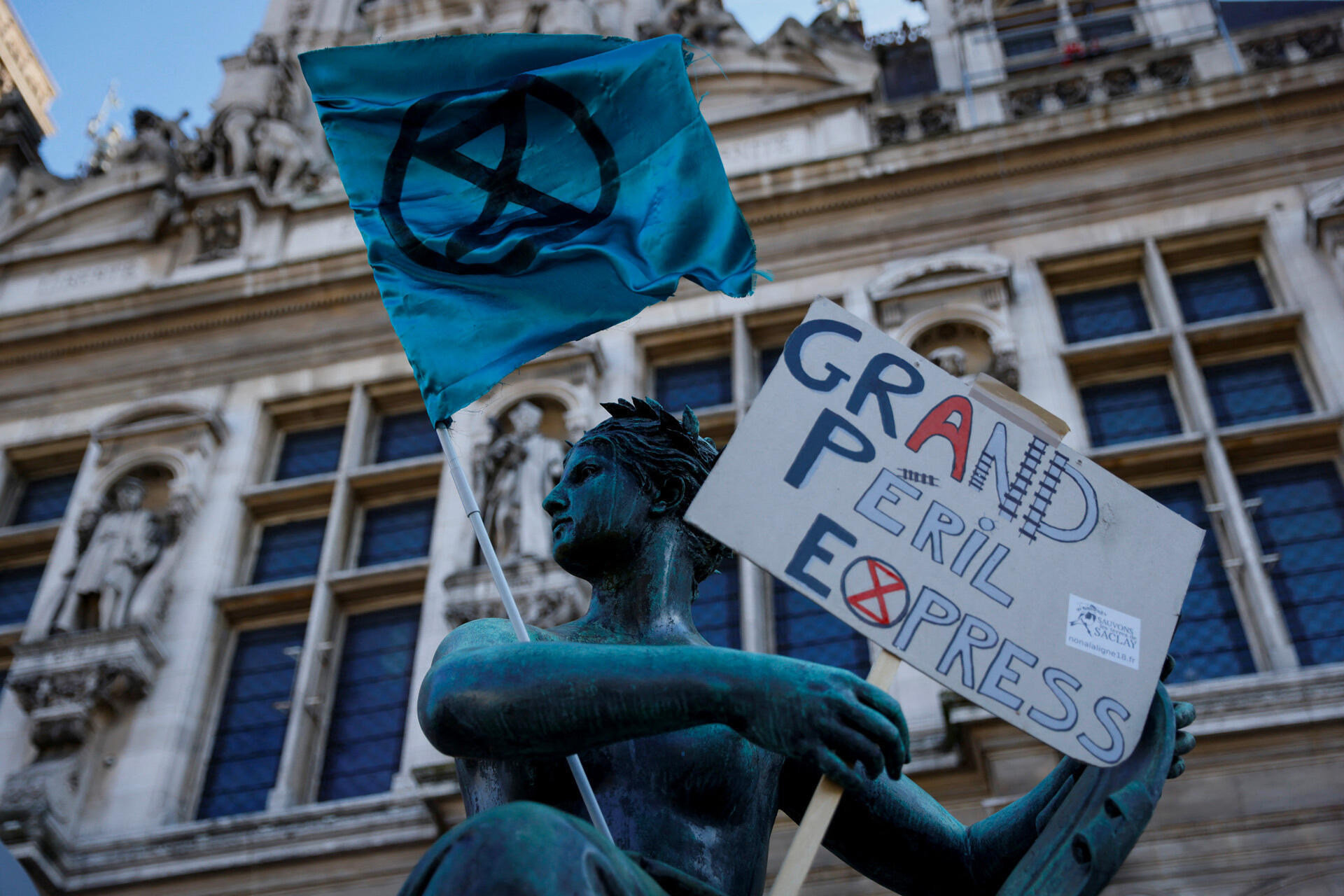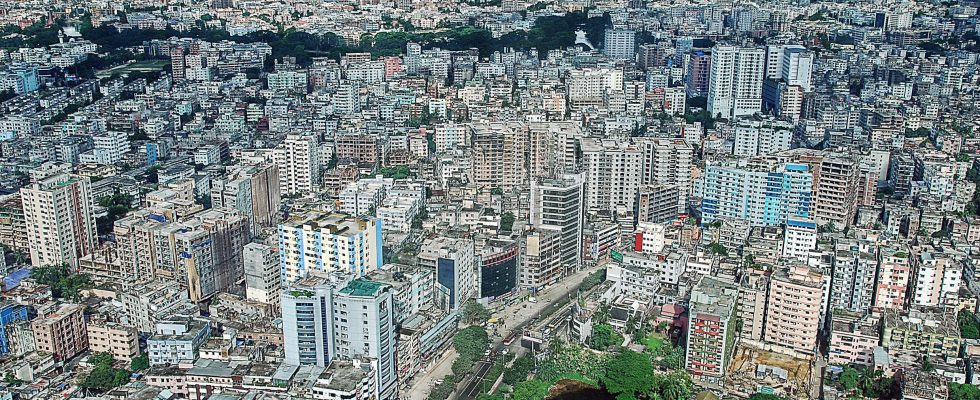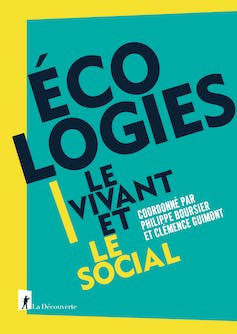By Guillaume Faburel, Lumière Lyon 2 University
If the process of globalized urbanization does not seem to want to mark time, the geographer Guillaume Faburel invites us to consider the urban disconnection in his text “Vider les cités? “, of which we offer you extracts. Find this reflection and many others in the collective book Ecologies. The living and the socialpublished by Editions de la Découverte.
Empty the cities? This is a priori a heresy. The city is progress and emancipation. All the great moments of our civilization are anchored there, from city-states to world-cities and today’s metropolises. Why the hell would you want to empty them?
Simply because every month around the world the equivalent of a city like New York comes out of the ground. Unless you believe in technological solutionism and the sustainability of transitions, it is time to reopen an option considered in the 1970s: the deurbanization of our societies. This may be the only solution to ecological devastation. A single “s” separates dwelling and excess, that of our own survival.
Today, 58% of the world’s population is urban, i.e. nearly 4.4 billion inhabitants (almost 40% of whom live in the United States, Europe and China), compared to 751 million in 1950. This proportion is even announced at 70% in 2050 by the United Nations (UN).
[…]
With more than twenty million inhabitants, Mumbai saw its built-up area almost double between 1991 and 2018, thus losing 40% of its vegetation cover. Dhaka, whose population of the agglomeration also exceeds twenty million inhabitants, saw the disappearance of 55% of the cultivated areas, 47% of the wetlands and 38% of the vegetation cover between 1960 and 2005. While the built-up area increased by 134 %.
Closer to home, Greater Paris has been the largest development site in the history of the capital since the Second Empire (19the century), with no less than two hundred kilometers of additional metro lines, one hundred and sixty kilometers of tunnels to be drilled, sixty-eight stations to be built, eighty thousand housing units to come out of the ground every year.
In France, moreover, the urban population increased by 20% between 1960 and 2018, to officially exceed 80% of the French population in 2020, reduced however to 67% by no longer taking into account only the influence of cities but also the size of the stands (criterion of construction density). Nearly half live in one of the twenty-two large cities (including four millionaires in number of inhabitants), to this day officially called metropolises. And, from these metropolitan centers to the peri-urban crowns, as in a good third of the perimeters of medium-sized towns and inter-municipalities (themselves growing by regulatory voluntarism), urbanization is growing twice as fast in surface area as in in population (and even three times in the 1990s, or annually the size of Marseille, a department every ten years, the Provence-Alpes-Côte d’Azur region in fifty years).
The metropolisation of the world
The primary centers as well as the main model of this growth are ensured by the large agglomerations, first and foremost the seven world cities (New York, Hong Kong, London, Paris, Tokyo, Singapore and Seoul) and their epigones, one hundred and twenty metropolises international. In total, they represent 12% of the world’s population for 48% of the world’s Gross Domestic Product (GDP). There is therefore capital to be fixed and “wealth” to be produced… On the condition of continuing to grow. Tokyo already has a GDP higher than that of Canada, Paris than that of Switzerland…
Initiated for forty years in Western countries, metropolisation represents the neoliberal stage of the globalized economy: urban polarization of new so-called post-industrial activities and rapid conversion of metropolitan powers to the logic of market firms.
It embodies the advantage acquired in recent decades by large cities: articulation of command functions (eg: business management) and communication (eg: airports, rail interconnections, etc.), polarization of financial markets (eg: stock exchanges and banking organisations), “high-level” job markets – which INSEE has qualified as metropolitan since 2002 (design-research and intellectual services, inter-company trade and managerial management, culture and leisure) or even segmented markets for consumption (tourism, art, technologies, etc.).
[…]
A deplorable environmental and health footprint
However, occupying only 2% of the surface of the Earth, the urban fact described produces 70% of waste, emits 75% of greenhouse gas (GHG) emissions, consumes 78% of energy and emits more than 90% of all the pollutants emitted into the air for, let us remember, 58% of the world’s population.
For GHGs alone, twenty-five of the world’s one hundred and sixty-seven largest cities are responsible for nearly half of urban CO2 emissions – cement manufacturing accounting for nearly 10% of global emissions, up 80% in ten years. Today, 40% of the world’s urban population lives in cities where exposure to extreme heat has tripled over the past thirty-five years.
Several megacities are sinking several centimeters annually under the weight of the density of construction materials and the pumping of groundwater (Mexico City, Tehran, Nairobi, Jakarta, etc.). The prevalence of so-called civilization diseases is much higher in large cities, responsible for forty-one million annual deaths worldwide (cancers, cardiovascular and pulmonary diseases, diabetes and obesity, mental disorders and mental illnesses).
Finally, according to the International Monetary Fund, by the end of the century, 74% of the world’s population (announced in 2100 80% urban) will experience deadly heat waves for more than twenty days a year. A point of comparison: the heat wave of 2003 in France, 15,000 deaths, in eighteen days. Moreover, in France, atmospheric pollution in large cities is responsible for 50,000 deaths annually.
The building-public works sector (BTP), all constructions combined (but 90% in areas defined as urban), represents 46% of energy consumption, 40% of our waste production and 25% of GHG emissions. The food autonomy of the first hundred cities is three days (98% imported food) and Paris, with all its necessary hectares, has an ecological footprint three hundred and thirteen times heavier than its own area.
[…]
If we cross the data of our ecological impacts with those of the planetary limits, we see that the average footprint of each French person will have to be divided by four to six to claim carbon neutrality by 2050. To do this, far from the ambient techno-solutionism and the sustainability of greening, autonomy, understood as self-subsistence and self-management, is the only way to imagine all of our pressures and to contain them through the self-determination of needs, as close as possible to resources and of their ecosystems. This, without neglecting our social interdependencies and some of our freedoms.

However, to achieve autonomy, any city should produce 100% of its energy, which is moreover renewable (currently, Lyon, Bordeaux or Rennes, for example, only produce 7% to 8%, non-renewable), restore open ground between 50% and 60% of the soil for food production and respect for the water cycle (to date, between 1% and 1.5% in cities labeled French Metropolises), or even return to ecosystems at least 15% of urbanized soils for biodiversity. All of this is morphologically infeasible and, whatever the case, unthinkable within the framework of a city that has become the primary mediation of capital.
In fact, we have no choice but to free ourselves from major centralities and their polarities, as certain peri-urban spaces are beginning to do; by deconcentrating and relocating, by decentralizing, without forgetting to decolonize certain habits and lifestyles.
But how to move from the era of silencing the inconsistency of our urban ecologies to the age of making post-urban geographies, without shrinking society through the interplay of identities and the return of a few barbed wire? What are the conditions for deurbanization without loss of otherness, and without forgetting this time the biotic community?
Soon, the urban disconnection?
This other geography is already under construction, quietly. More open spaces, those in the countryside, offer other possibilities, subject to the revision of certain behaviors, particularly those related to our mobility, connectivity and entertainment. In France, this corresponds to the proliferation of alternatives within the spaces drawn by the thirteen thousand small towns and small local towns, towns and central villages, to which must be added the thousands of other villages, hamlets and places called: neo-ruralities who are experiencing their seventh wave of settlement, dynamic neo-peasantries, areas to defend, existential/intentional communities, school children and social farms…
Permaculture and food self-sufficiency, participatory construction sites and bioclimatic self-construction, itinerant social grocery stores and itinerant village media libraries, local festivals and vernacular knowledge… are clearly in the line of sight here. And one could imagine local housing fairs, since nearly three million are vacant in the outskirts, while this sector is allegedly in crisis. And, all this effervescence concerns no less than 30% of the French territory.
Published on January 12, 2023. ©Discovery Editions, CC BY-NC-ND
This would be the reason for the urban disconnection: to stop being the involuntary agents of urban mega-machines by recovering the power to act, no longer to unite against nature but to become one with the living. The triptych of inhabiting the earth, cooperating by doing, self-managing in solidarity can constitute the matrix of a post-urban ecological society. On condition of emptying the cities, the big ones, and finally moving towards the sufficient.
Guillaume FaburelProfessor, researcher at UMR Triangle, Lumière Lyon 2 University
This article is republished from The Conversation under Creative Commons license. Read theoriginal article.
![]()

